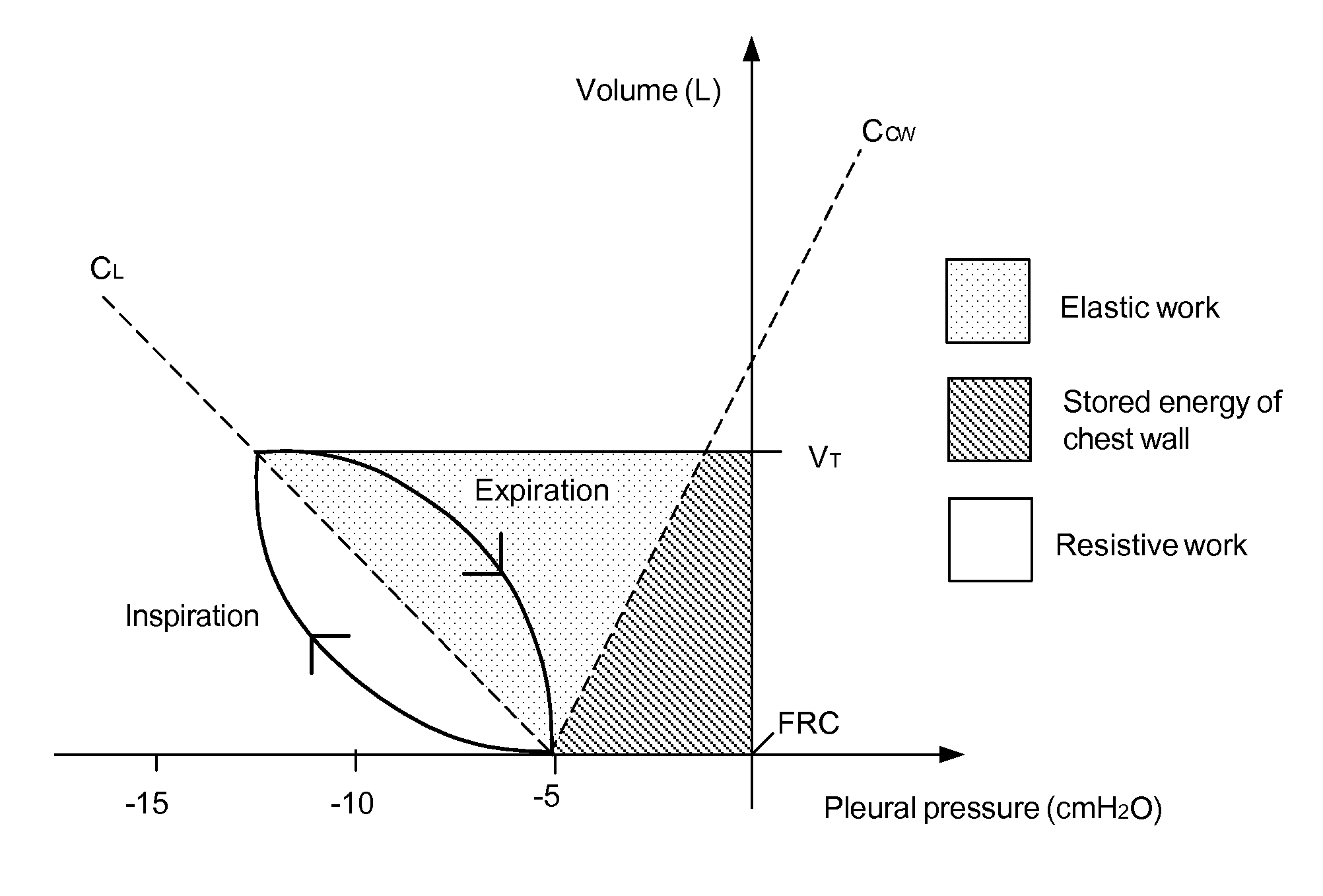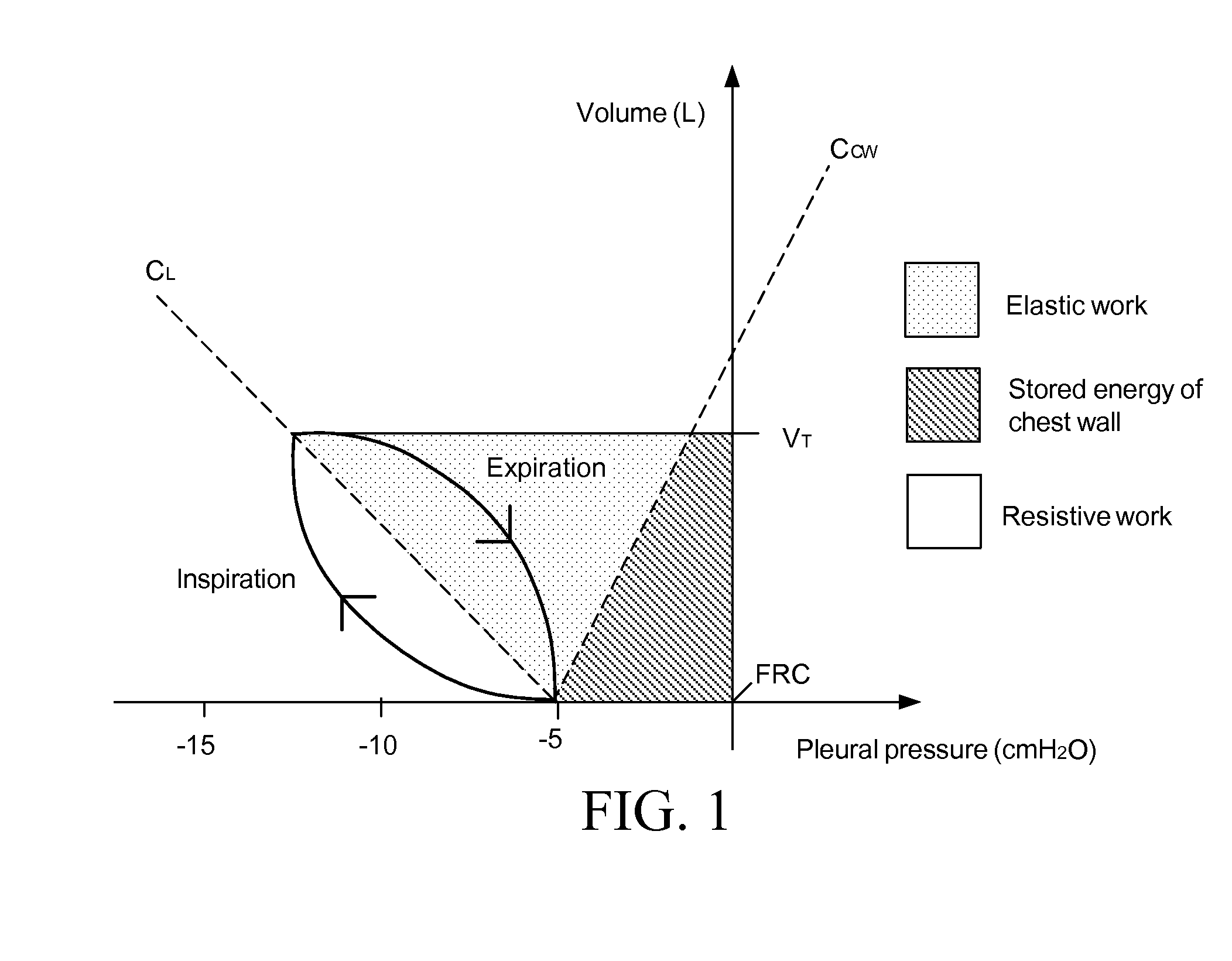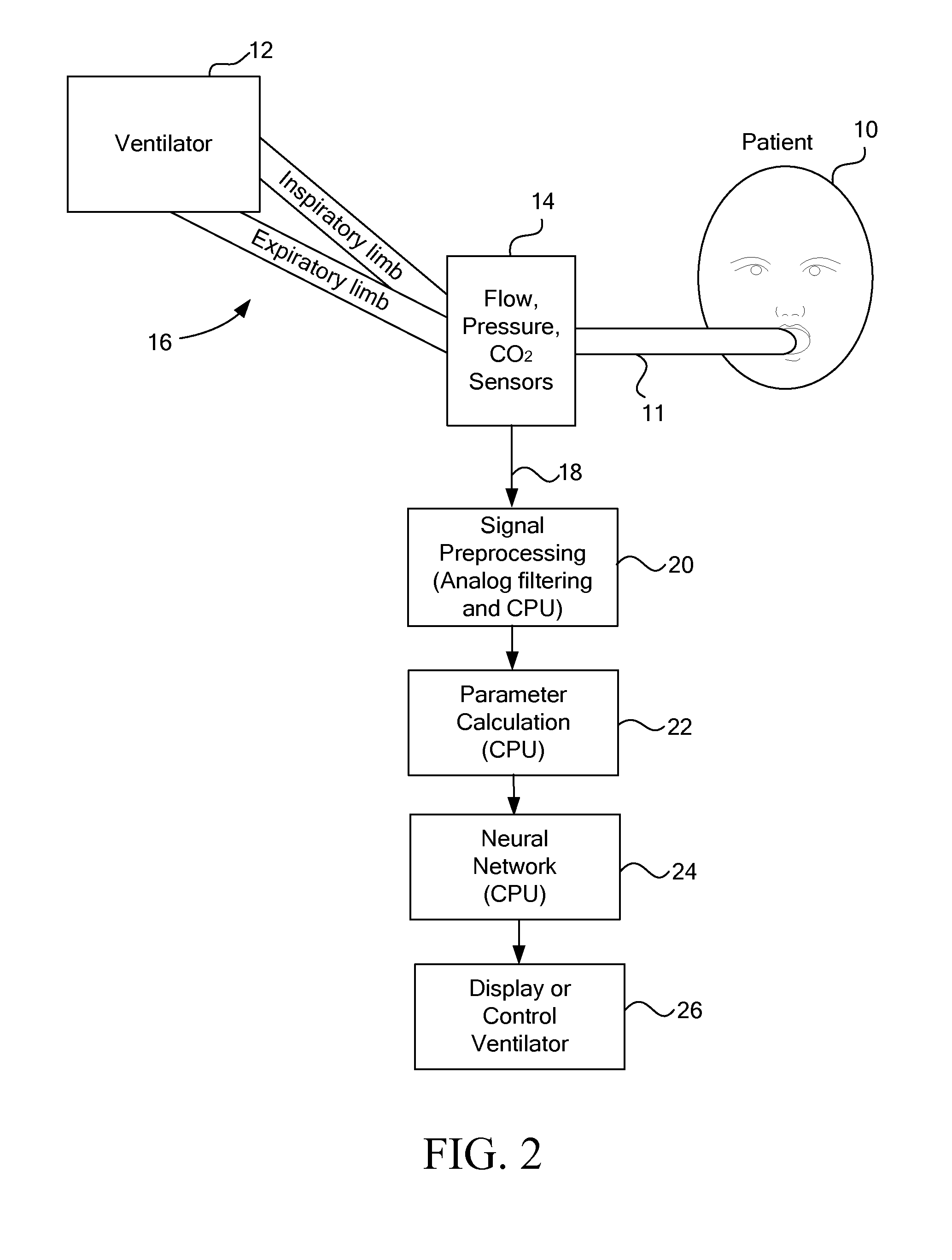Method and apparatus for predicting work of breathing
a breathing and work technology, applied in the field of respiratory therapy and physiology, can solve the problems of affecting the breathing of patients with weakened bodies, and being beyond the capacity or capability of small or disabled patients, and achieve the effect of avoiding respiratory muscle fatigue and respiratory muscle deconditioning
- Summary
- Abstract
- Description
- Claims
- Application Information
AI Technical Summary
Benefits of technology
Problems solved by technology
Method used
Image
Examples
example 1
Prediction of Power of Breathing
[0061]With one particular subset of parameters (respiratory system resistance, compliance, tidal volume, and frequency), the present invention predicted power of breathing with a correlation coefficient well over 0.90. Similar results were obtained with other combinations of parameters. FIG. 3 shows a plot of predicted versus actual, or measured, power of breathing. A perfect prediction would be indicated by all values having identical x- and y-axis values, and thus would fall on the diagonal black line 40 shown in the FIG. 3. The wider the spread from this line, the lower the correlation between predicted and actual power of breathing. In this particular prediction, data was obtained from 150 patients collected at Shands Hospital at the University of Florida. The data was collected with multiple ventilator settings for each patient, thus giving us approximately 500 data points in the study.
example 2
Data for a Prediction (Table 1 Includes the First Data Points)
[0062]During data collection, respiratory measurements are made continuously and collected. These measurements are stored and later fed to the neural network for training. After the neural network model is trained successfully, the measurements from future are input to the “trained” model to produce a noninvasive prediction of actual power of breathing. This prediction of power of breathing is then used in a downstream fuzzy logic system that recommends changes to the ventilator.
[0063]In this example, the inputs / outputs to the system are:[0064]Minute Ventilation—the total volume delivered to the patient per minute (e.g. roughly tidal volume times breath frequency) in Liters.[0065]Trigger Gradient—the slope of the airway pressure drop due to the patient effort that riggers the breath (e.g. before the ventilator starts providing flow to the patient) in cm H2O per second.[0066]Pressure Rise Time—the time it takes for the flo...
PUM
 Login to View More
Login to View More Abstract
Description
Claims
Application Information
 Login to View More
Login to View More - R&D
- Intellectual Property
- Life Sciences
- Materials
- Tech Scout
- Unparalleled Data Quality
- Higher Quality Content
- 60% Fewer Hallucinations
Browse by: Latest US Patents, China's latest patents, Technical Efficacy Thesaurus, Application Domain, Technology Topic, Popular Technical Reports.
© 2025 PatSnap. All rights reserved.Legal|Privacy policy|Modern Slavery Act Transparency Statement|Sitemap|About US| Contact US: help@patsnap.com



